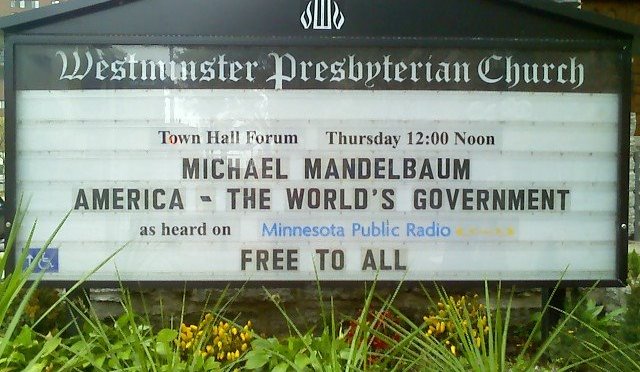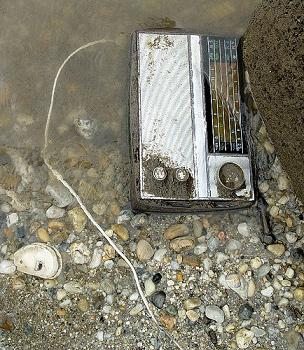 In the past couple of weeks, the youth-oriented music TV juggernaut MTV has re-launched their Spanish-language channel. The channel had been around for some time, but had little identity other than a logo and descriptive yet unimaginitive name of MTV Español. The program roster was much like that of the regular MTV of yore — nothing but videos, all kinds, all pop music genres [rock, pop, R&B, hip-hop]. MTV Español did have the popular music with the Reggaetón, Latin hip-hop, urban Latin, Latin Rock, and others, but there was no form.
In the past couple of weeks, the youth-oriented music TV juggernaut MTV has re-launched their Spanish-language channel. The channel had been around for some time, but had little identity other than a logo and descriptive yet unimaginitive name of MTV Español. The program roster was much like that of the regular MTV of yore — nothing but videos, all kinds, all pop music genres [rock, pop, R&B, hip-hop]. MTV Español did have the popular music with the Reggaetón, Latin hip-hop, urban Latin, Latin Rock, and others, but there was no form.
MTV Tr3s, the new name of the Latino-centric channel is changing all of that. The name itself is an interesting thing; it is a logical extension of the branding that MTV has pursued in the past with its second channel launched in the lated 90s: MTV2. MTV2 was to be a return to the form of the old MTV, playing nothing but videos again. This was refreshing because the regular MTV was playing some videos, but they were also packing the schedule with non-music related, youth-oriented programming like The Real World and lame dating games and so on. MTV was finally figuring out that they had a demographic that would consume more than just music videos.
From a strictly visual standpoint, the name MTV Tr3s is clever because it incorporates the Spanish word for three, “tres” [mom, arent’ you glad I watched Sesame Street?] and takes to the mainstream the youth internet/texting phenomenon of leet [a.k.a. 1337] by switching the “é” to a “3” with a gravé. This is a very explicit reference to a youth-exclusive code of sorts. This gives the name a certain caché with the kids, as most of the parents do not know what is up.
As I watched a rebroadcast of the Tr3s launch party, I was struck by how clear the messaging was to the viewers. You aren’t watching MTV Español any longer; this is MTV Tr3s and it is for you — billingual, hip, and proud to show the wonderful Latino youth culture. The pride factor is something that MTV has cultivated in some interstials on some of their other channels like MTV Jams, the hip-hop video channel, and the sister company’s VH1 Soul, an R&B and soul video stream. This is something we will see more and more of in the future when media companies attempt to secure new audiences with more than a passing interest in the specific content offering.
Programmatically, MTV tr3s will mirror the successes of what currently dominates the MTV schedule. There is a separate version of the ever-popular after school program TRL [Total Request Live, a viewer-voted hits countdown] called Mi TRL. This is a nod to the billingual nature of the concept; you have the possesive Mi in Spanish but retain the TRL from the English version. It could have easily been Mi PTV [petición total viva] which would have missed the point entirely.
Other borrowed programs will include Pimpeando, a version of the outlandish automobile-sprucing hit show Pimp My Ride and Quiero Mis Quinces a culturally relevant version of My Super Sweet Sixteen. The MTV version followed extravagantly wealthy girls’ sixteenth birthday party plannings and actual event. The Tr3s version focuses on the Latina equivalent, the quinceañera, celebrated on the fifteenth birthday. MTV has done some homework here.
Finally, the website for this new channel is an entitiy unto itself, rather than being a new section on the MTV site. Features include a MySpace-like social networking tool that allows users to connect with people, filtering the results based on age, sex, nationality, and interests. The whole site is peppered with Spanish words here and there, most often ones that share a common Latin root, therefore easily deciphered by those that do not speak Spanish [ex: la voz, comunidad, representa.]
What relevance might this offer to the radio world? As we go forth to capture a younger audience, the same amount of homework needs to be completed. It can’t be an hour here and there. MTV could have done that with a three-hour block on Saturdays, but they were aware that the potential was too large. Focusing the effort into an entirely new channel is a gamble, but also may be the only way to truly serve this new audience.
 The issue of relevance in the community has come up in recent posts about terrestrial stations’ viability in the realm of non-terrestrial distribution. One example of how this is done in a number of ways is by the upper-Midwest empire that is Minnesota Public Radio. For the sake of brevity, the focus will be on two contrasting points of entry into the community.
The issue of relevance in the community has come up in recent posts about terrestrial stations’ viability in the realm of non-terrestrial distribution. One example of how this is done in a number of ways is by the upper-Midwest empire that is Minnesota Public Radio. For the sake of brevity, the focus will be on two contrasting points of entry into the community.










